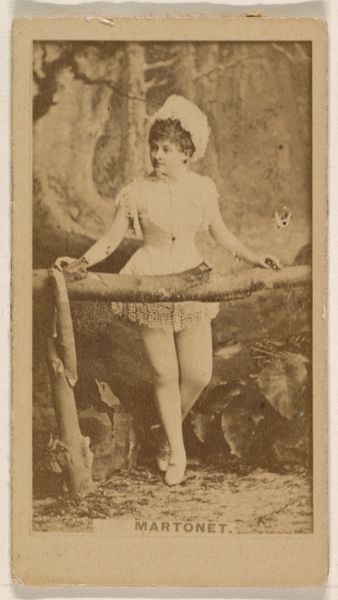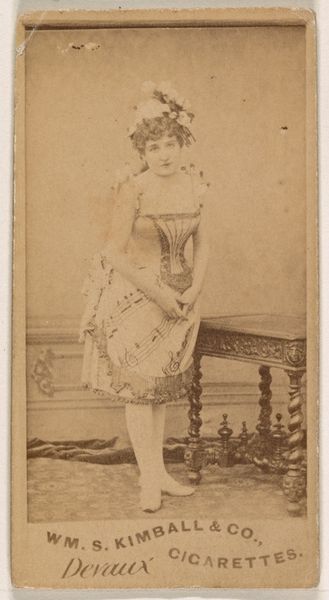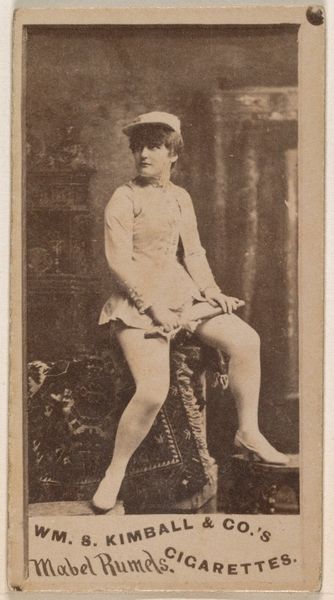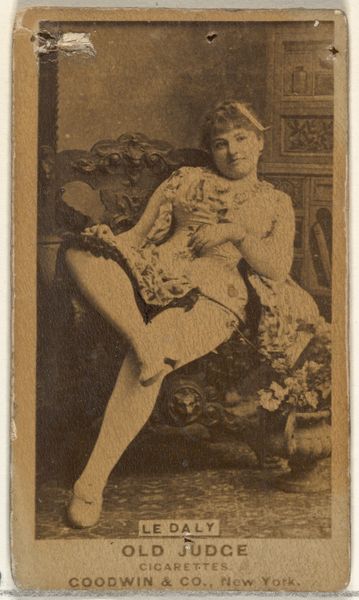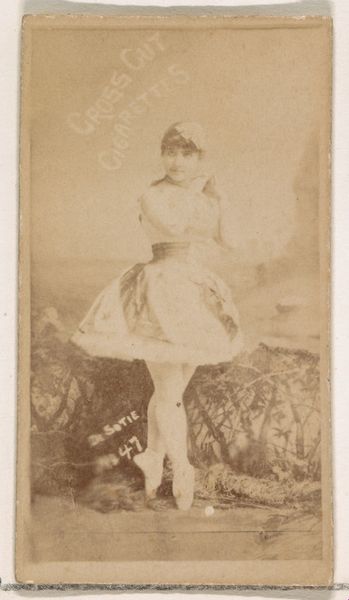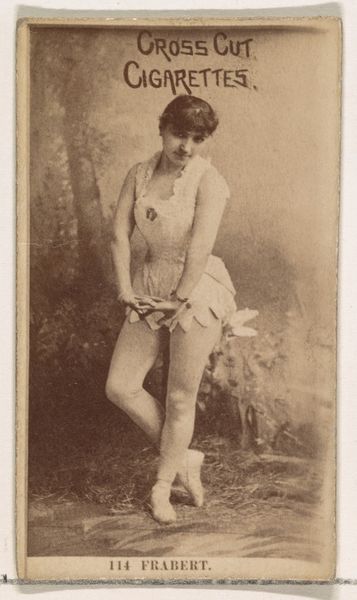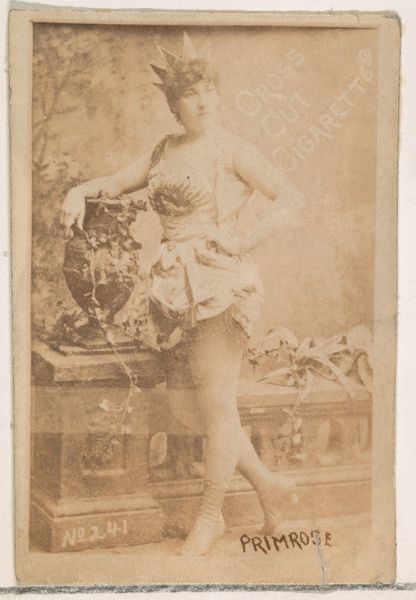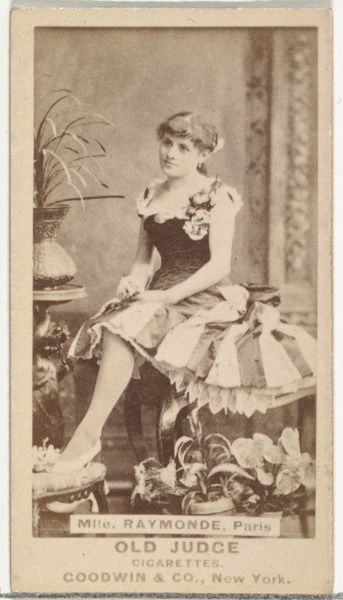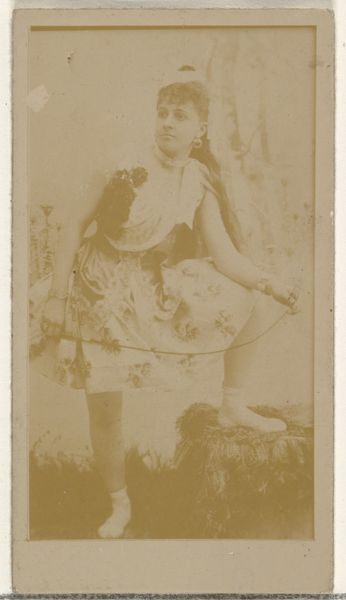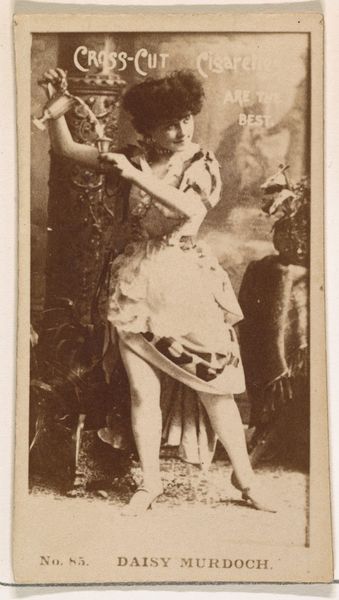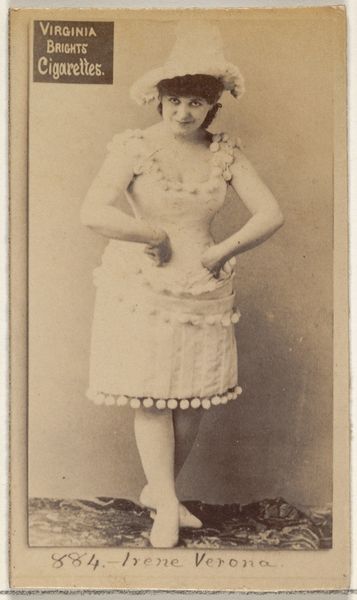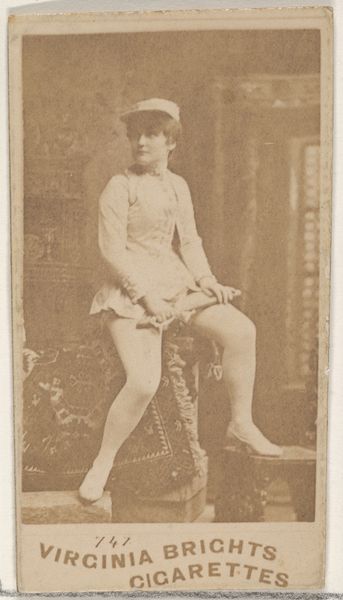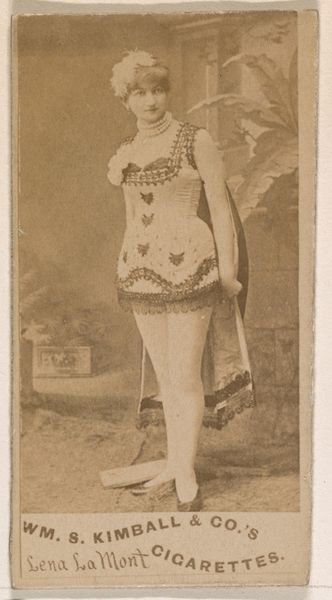
Card Number 1242, Brevoor, from the Actors and Actresses series (N145-1) issued by Duke Sons & Co. to promote Cross Cut Cigarettes 1880s
0:00
0:00
drawing, print, photography
#
portrait
#
drawing
# print
#
photography
#
historical photography
#
photojournalism
Dimensions: Sheet: 2 1/2 × 1 3/8 in. (6.4 × 3.5 cm)
Copyright: Public Domain
Curator: This is "Card Number 1242, Brevoor," part of the "Actors and Actresses" series from the 1880s, produced by Duke Sons & Co. to promote Cross Cut Cigarettes. It combines photography with printed elements, reflecting popular culture and advertising of the time. Editor: It's fascinating how such a small format photograph jumps out – like a calling card almost. Her pose is very staged, like a dancer caught mid-motion or poised to speak her lines, and all in service of, you know, selling smokes! Curator: Exactly. Think about the sheer scale of production. Duke Sons & Co. churned out millions of these cards. It speaks volumes about the industrialization of leisure and the marketing tactics employed in the late 19th century. The materials are simple—photographic print adhered to cardstock—but their mass distribution created a cultural phenomenon. Editor: It also showcases how women, particularly actresses like Brevoor, became instrumental in branding and commercialism. Their bodies, faces, and perceived social standing became tools to encourage and validate male consumption habits, reinforcing societal power dynamics and gender roles of the time. What agency did she actually have? Curator: Precisely. These cards weren't simply innocent depictions. They were manufactured objects with a clear economic function. Studying the printing process, the cardstock quality, the ink used—it all unveils a network of labor, resources, and capital converging to create a seemingly ephemeral object. Editor: Absolutely, and understanding her as a commodity also reveals the era's conflicting values. She is portrayed in revealing clothing for public consumption yet exists within a society marked by constraints for women outside the entertainment industry, it seems. The card functions as both marketing tool and historical document exposing exploitation and performance. Curator: Ultimately, this "Brevoor" card reveals much about the culture and economics of its time. It forces us to acknowledge art, even in commercial form, as enmeshed within social, political, and industrial landscapes. Editor: Right, looking at this, we confront uncomfortable truths. A photograph meant to be casually tossed aside provides critical insight into how power, gender, and commercialism have long shaped, and still shape, our everyday realities.
Comments
No comments
Be the first to comment and join the conversation on the ultimate creative platform.
